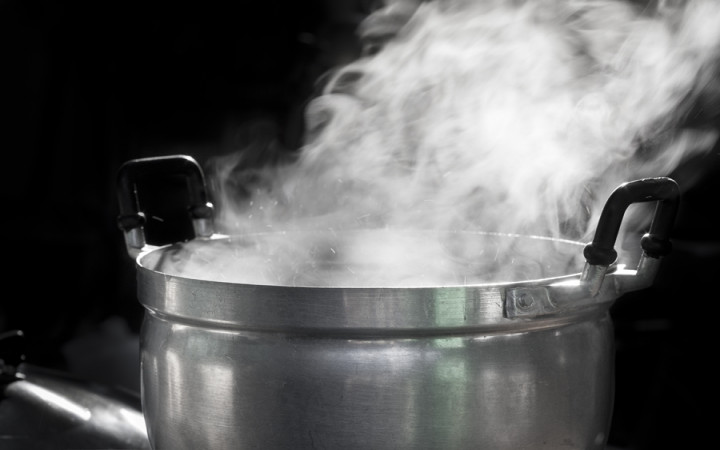Was it foggy this morning when you got up? If it wasn't foggy outside, there's a chance that it might have been foggy inside!
Did you have a cup of hot chocolate for breakfast? Maybe your parents had a steaming cup of coffee? What about when you took a shower? Did the warm water create some foggy conditions in your bathroom?
Have you ever seen that tell-tale foggy steam around hot water and WONDERed, “What's the deal?" That's the exact question that some of our Wonder Friends have asked, so we thought we'd take a look today at the science behind the fog that often surrounds hot water.
If you've ever helped make spaghetti for dinner, you've probably seen boiling water in a big pot on the stove. When the water in the pot heats up to 212º F (100º C), it begins to boil. The liquid water turns to a gas, and you see lots of bubbles and steam rising into the air.
So, science can explain the foggy steam you see above a pot of boiling water. But what about the foggy “steam" you see above a hot cup of coffee or in the air around a hot shower? That water is well below the boiling point or you wouldn't be able to drink it or bathe in it. So what's going on?
The scientific process of evaporation is what's going on! Evaporation is the process by which liquid water changes to gaseous water vapor in the air as part of the water cycle. Although the process of evaporation is much slower than boiling, it does speed up as water heats up and gains energy.
Water molecules in liquid water are constantly moving around and bumping into each other, transferring kinetic energy in the process. The molecules at the surface occasionally gain enough energy to escape from the surrounding water into the atmosphere. That's evaporation.
As water heats up, there's more energy involved, so more molecules will be able to reach the point at which they can escape into the atmosphere. Evaporation is still only occurring at the surface, but it's happening faster as the temperature of the water rises.
At the boiling point, there's enough kinetic energy in the liquid water to allow any water molecule to escape into the atmosphere, regardless of whether it's on the surface or not. That's why you see the rapid bubbling and release of steam from a boiling pot of water.
The atmosphere can only hold so much water vapor, however. At a certain point, known as the dew point, the atmosphere becomes so saturated that it can no longer hold all the water vapor and some of it must condense back into liquid water.
That's what's happening in your shower and above your steaming cup of coffee. Some of the liquid that's evaporating causes the atmosphere right above it to reach the dew point. Some of the water vapor condenses back into tiny droplets of liquid water, which you then see as fog or “steam."




